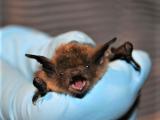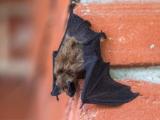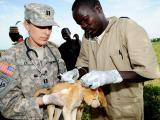Marking the first federal collaboration report of its kind on US zoonotic disease threats, the Centers for Disease Control and Prevention (CDC) and its partners have released a top priority list of eight diseases that includes influenza, salmonellosis, plague, MERS-CoV, and Lyme disease.
Based on a workshop held in December, officials from the CDC, the US Department of the Interior (DOI), and the US Department of Agriculture (USDA) agreed on the list and made recommendations using a One Health approach, a collaborative system for achieving the best health outcomes by factoring in connections between people, animals, plants, and their shared environments.
Casey Barton Behravesh, DVM, DrPH, MS, who directs the CDC's One Health office, said in a CDC press release, "Every year, tens of thousands of Americans get sick from diseases spread between animals and people." She added that the CDC and its partners are bringing together disease detectives, laboratorians, physicians, and veterinarians to prevent the illnesses and protect the health of people, animals, and the environment.
Eight top US threats
According to the 68-page report, which is a summary of the workshop, participants identified a criteria list for ranking 56 zoonotic diseases, and nine voting members from each of the three agencies voted to select the top five criteria most important to their group. Then they used a CDC-developed One Health prioritization tool to sift out the priority diseases.
The priority diseases that made the cut are:
- Zoonotic influenza
- Salmonellosis
- West Nile virus
- Plague
- Emerging coronaviruses such as severe acute respiratory syndrome (SARS) and MERS-CoV (Middle East respiratory syndrome coronavirus)
- Rabies
- Brucellosis
- Lyme disease
For each disease, the report covers the human burden and animal burden—broken down into livestock and poultry, wildlife, and pets. It also details the impact on the environment and reviews current work by the CDC, USDA, and DOI.
The CDC said the report is designed to be a resource for groups that work on One Health issues, the media, and other stakeholders.
Next-step recommendations
After settling on the priority list, the group also discussed the next steps and milestones over the next 5 years for collaborating on the diseases. Action items fall into eight key areas.
One is to increase and leverage leadership engagement, which includes presenting the preliminary results of the workshop with leaders from all three of the organizations. Another is to create a formalized federal One Health coordination mechanism.
The group also recommended that a National One Health Framework be developed by a core group of experts from the CDC, USDA, and DOI who would draft a plan that spells out a common vision and goals and define the roles and responsibilities of federal partners.
Other recommendations include improving knowledge and data sharing for lab, surveillance, and response activities; improving coordination during outbreak response; strengthening joint investments on the priority zoonoses; enhancing education and awareness; and addressing research gaps and needs.
See also:
May 6 CDC press release
May 6 zoonotic disease report













